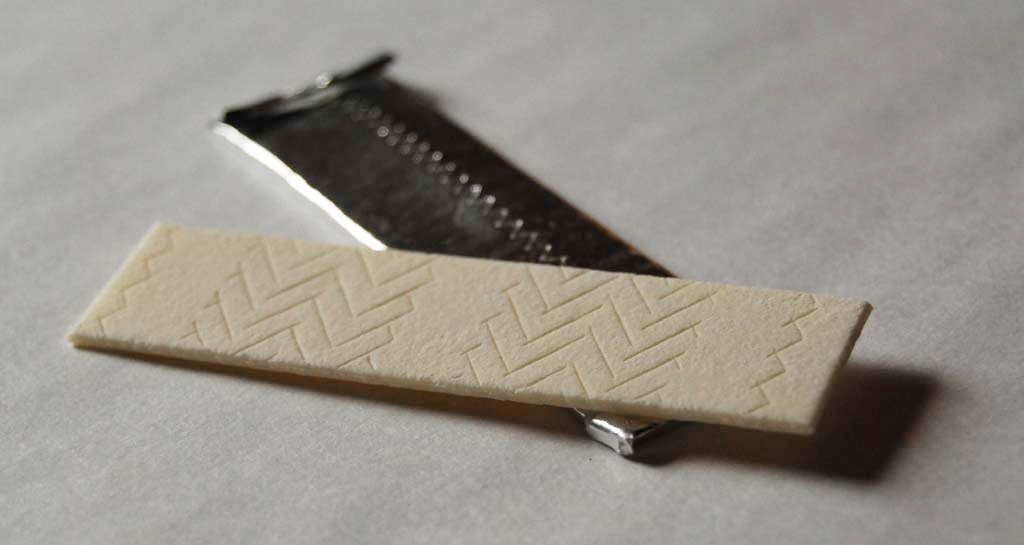First off, no, scientists did not slap fins onto a human heart and made it backstroke across a pond; what happened here was instead a bit of a quirky offshoot of an otherwise medically relevant pursuit. Researchers from Harvard University managed to create heart muscle cells out of human stem cells and gave them fins and a tail to give the radical biohybrid “fish” some sense of movement as its muscle cells beat just like a heart does.
This remarkable demonstration of biomedical engineering was the product of researchers from Harvard’s John A. Paulson School of Engineering and Applied Sciences (SEAS) in collaboration with colleagues from Emory University, whose published paper in the journal Science was headed by senior author SEAS Tarr Family Professor of Bioengineering and Applied Physics Kit Parker.
Said Parker in Harvard’s official statement: “Our ultimate goal is to build an artificial heart to replace a malformed heart in a child. […] Most of the work in building heart tissue or hearts, including some work we have done, is focused on replicating the anatomical features or replicating the simple beating of the heart in the engineered tissues.
Parker continued: “[…] Here, we are drawing design inspiration from the biophysics of the heart, which is harder to do. Now, rather than using heart imaging as a blueprint, we are identifying the key biophysical principles that make the heart work, using them as design criteria, and replicating them in a system, a living, swimming fish, where it is much easier to see if we are successful.”
This almost fantastical development was actually the latest in a long line of research spanning years, beginning in their attempt to create a biohybrid “jellyfish” using heart muscle cells and silicone—a hybrid they called the “Medusoid”—and was followed up with a biohybrid “stingray” soft robot made using rat heart cells over a flexible polymer, which was designed to swim using pulses of light. (The two earlier studies were published in the journals Nature Biotechnology and Science, respectively.)
The overall design of the biohybrid “fish” was said to be inspired by the real-life zebrafish (Danio rerio), and was composed of two layers of heart muscle cells that alternated; when one side contracts, the other stretches, with the two actions contained in a “closed loop” system that allowed the contractions—and the resulting “fish”—to propel itself for more than 100 days on end.
“By leveraging cardiac mechano-electrical signaling between two layers of muscle, we recreated the cycle where each contraction results automatically as a response to the stretching on the opposite side,” said study co-first author and SEAS postdoctoral fellow Keel Yong Lee. “The results highlight the role of feedback mechanisms in muscular pumps such as the heart.”
Sung-Jin Park, the fellow co-first author of the study and from the SEAS Disease Biophysics Group, continued: “Because of the two internal pacing mechanisms, our fish can live longer, move faster, and swim more efficiently than previous work. This new research provides a model to investigate mechano-electrical signaling as a therapeutic target of heart rhythm management and for understanding pathophysiology in sinoatrial node dysfunctions and cardiac arrhythmia.”
Amazingly, the biohybrid also seemed to improve its swimming efficiency as it “grew older,” as the cardiomyocyte cells matured improving its performance. The team mentioned that at its peak, the biohybrid “reached speeds and swimming efficacy similar to zebrafish in the wild.” Additionally, future work sees Parker and the rest of the research team aiming for even more complex biohybrid structures made from heart cells.
Finally, Parker concluded: “I could build a model heart out of Play-Doh, it doesn’t mean I can build a heart. […] You can grow some random tumor cells in a dish until they curdle into a throbbing lump and call it a cardiac organoid. Neither of those efforts is going to, by design, recapitulate the physics of a system that beats over a billion times during your lifetime while simultaneously rebuilding its cells on the fly. That is the challenge. That is where we go to work.”
References
- Artificial jellyfish swims in a heartbeat. (2012, July 22). Harvard John A. Paulson School of Engineering and Applied Sciences. https://www.seas.harvard.edu/news/2012/07/artificial-jellyfish-swims-heartbeat
- Ceurstemont, S. (2016, July 7). Watch a cyborg stingray made of rat heart cells swim using light. New Scientist. https://www.newscientist.com/article/2096442-watch-a-cyborg-stingray-made-of-rat-heart-cells-swim-using-light/
- Hamilton, J. (2016, July 7). Synthetic stingray may lead to a better artificial heart. NPR. https://www.npr.org/sections/health-shots/2016/07/07/484950849/synthetic-stingray-may-lead-to-a-better-artificial-heart
- Irving, M. (2022, February 11). Biohybrid fish powered by beating human heart cells swims for 100 days. New Atlas. https://newatlas.com/robotics/biohybrid-fish-human-heart-cells/
- Lee, K. Y., Park, S.-J., Matthews, D. G., Kim, S. L., Marquez, C. A., Zimmerman, J. F., Ardoña, H. A. M., Kleber, A. G., Lauder, G. V., & Parker, K. K. (2022). An autonomously swimming biohybrid fish designed with human cardiac biophysics. Science, 375(6581), 639–647. https://doi.org/10.1126/science.abh0474
- Nawroth, J. C., Lee, H., Feinberg, A. W., Ripplinger, C. M., McCain, M. L., Grosberg, A., Dabiri, J. O., & Parker, K. K. (2012). A tissue-engineered jellyfish with biomimetic propulsion. Nature Biotechnology, 30(8), 792–797. https://doi.org/10.1038/nbt.2269
- Park, S.-J., Gazzola, M., Park, K. S., Park, S., Santo, V. D., Blevins, E. L., Lind, J. U., Campbell, P. H., Dauth, S., Capulli, A. K., Pasqualini, F. S., Ahn, S., Cho, A., Yuan, H., Maoz, B. M., Vijaykumar, R., Choi, J.-W., Deisseroth, K., Lauder, G. V., … Parker, K. K. (2016). Phototactic guidance of a tissue-engineered soft-robotic ray. Science. https://doi.org/10.1126/science.aaf4292










